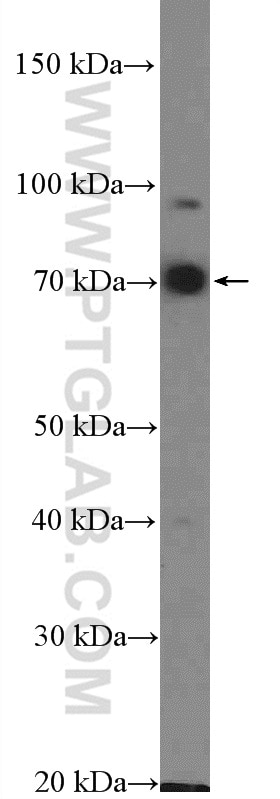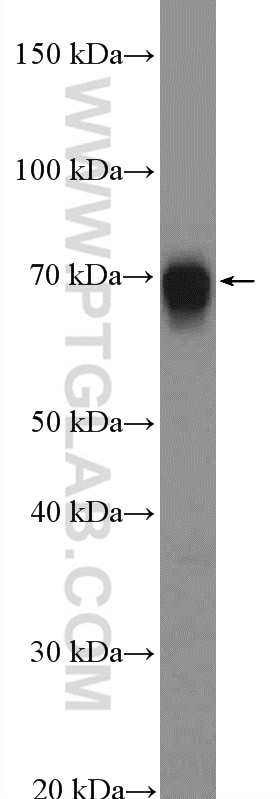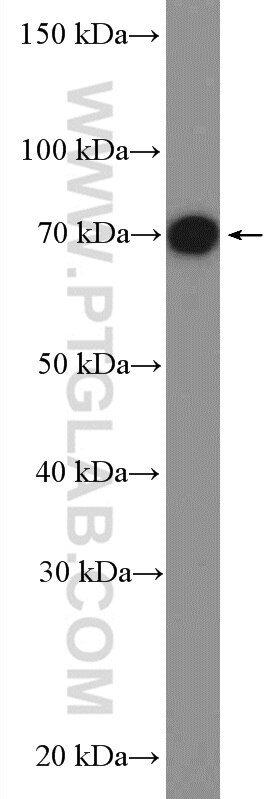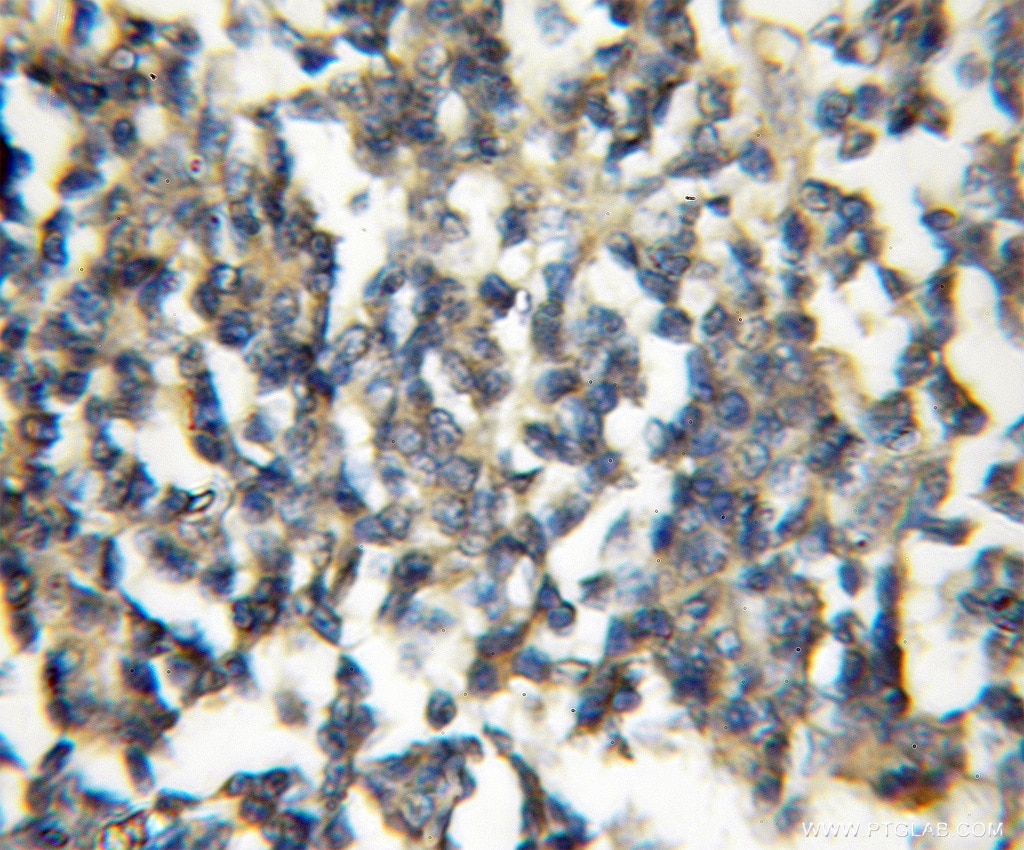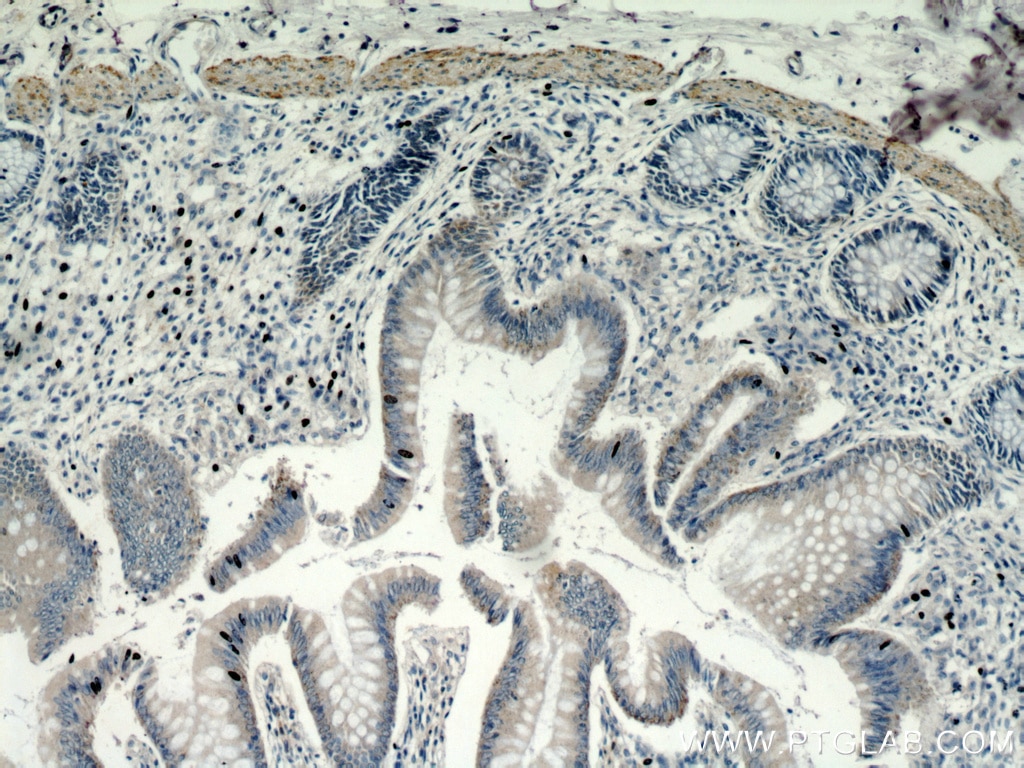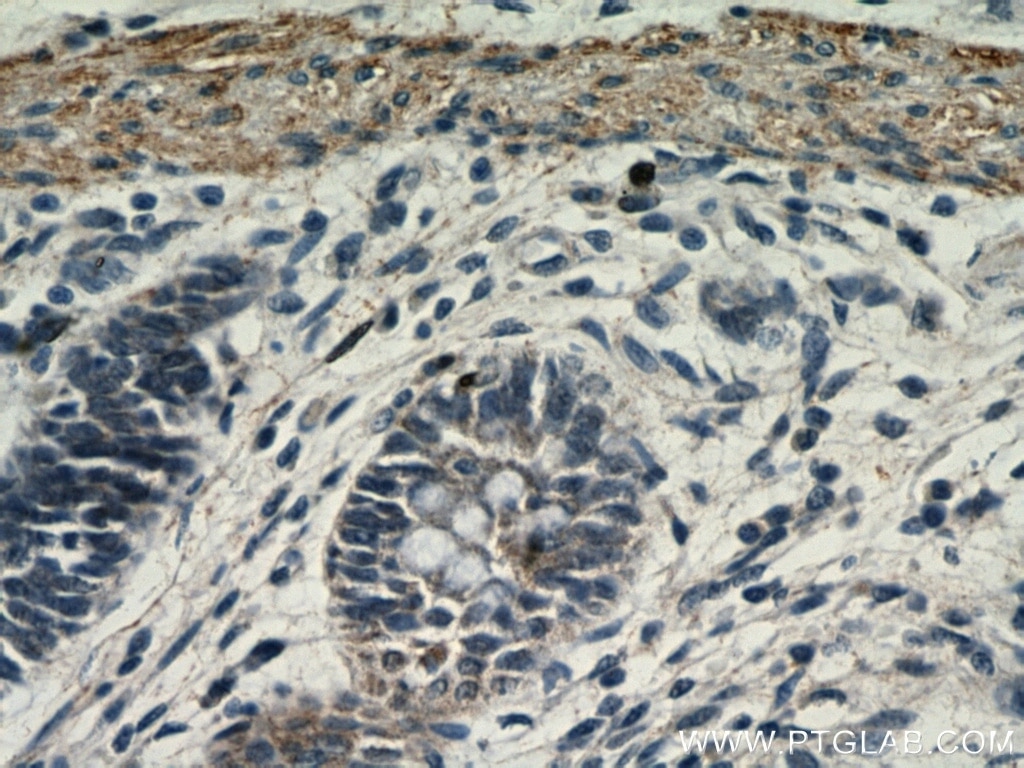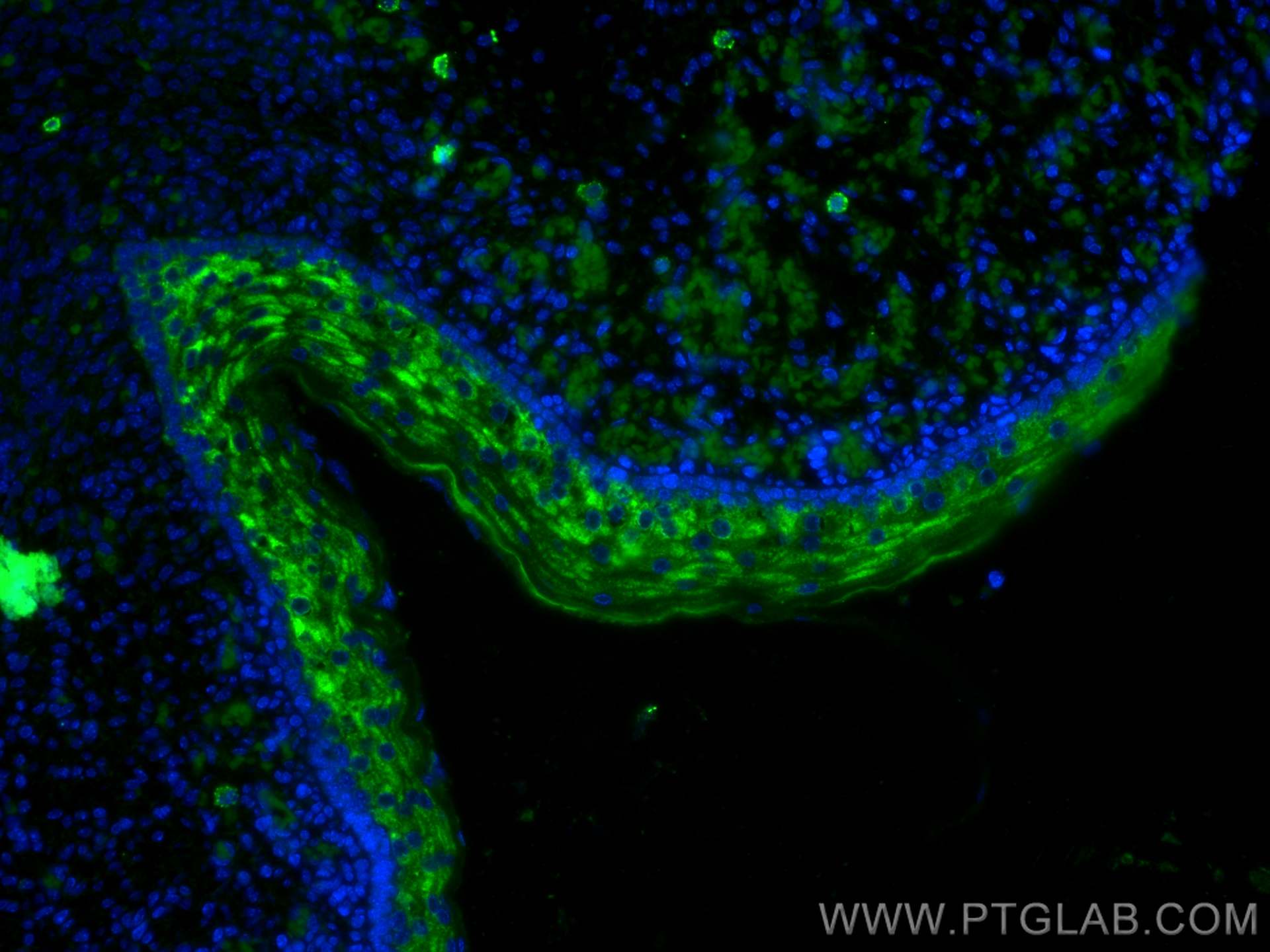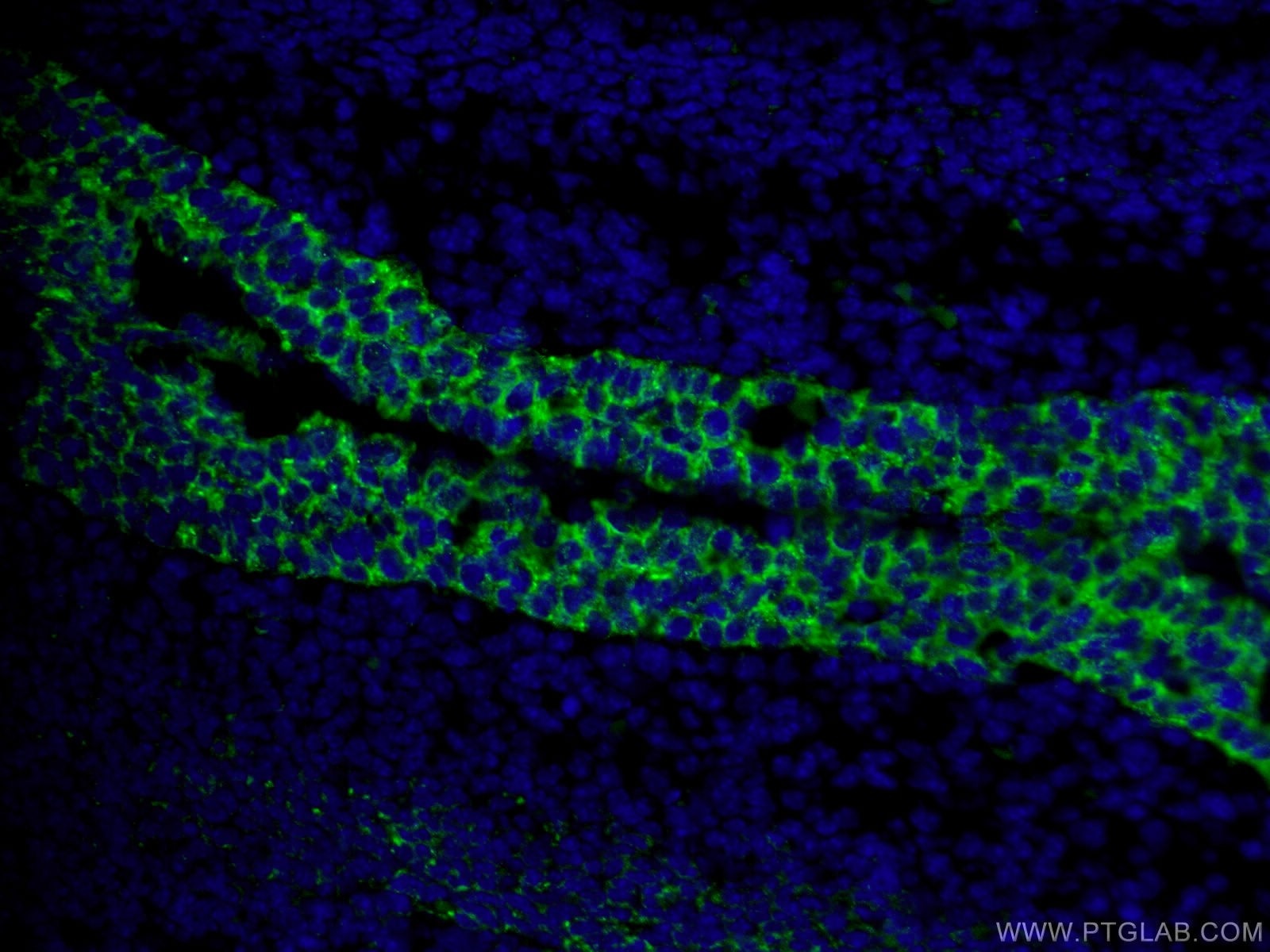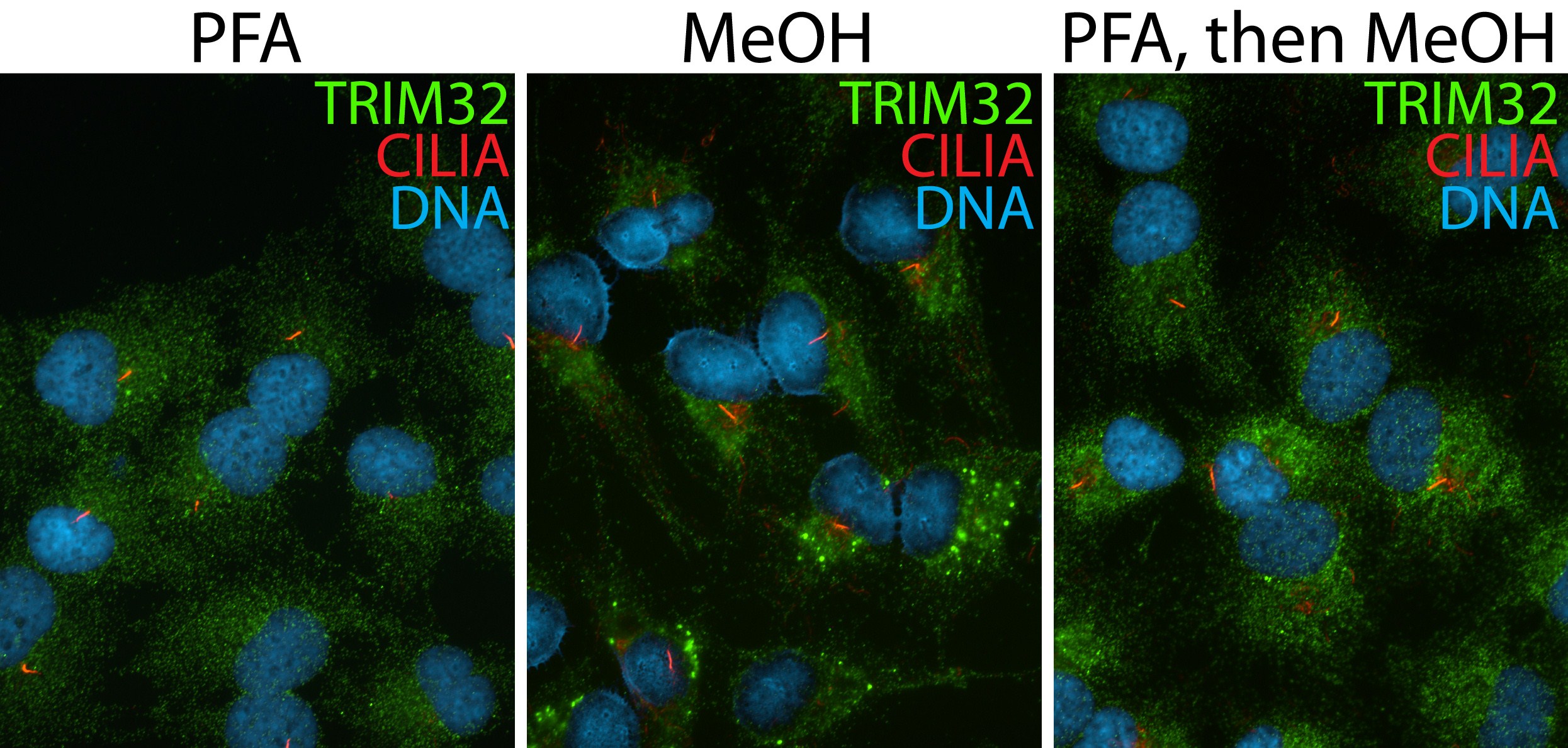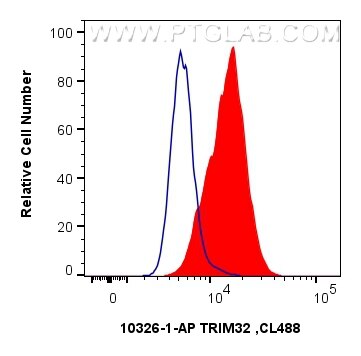- Phare
- Validé par KD/KO
Anticorps Polyclonal de lapin anti-TRIM32
TRIM32 Polyclonal Antibody for WB, IHC, IF/ICC, IF-P, FC (Intra), ELISA
Hôte / Isotype
Lapin / IgG
Réactivité testée
Humain, rat, souris
Applications
WB, IHC, IF/ICC, IF-P, FC (Intra), IP, ELISA
Conjugaison
Non conjugué
N° de cat : 10326-1-AP
Synonymes
Galerie de données de validation
Applications testées
| Résultats positifs en WB | cellules HEK-293, cellules NIH/3T3, tissu de côlon de souris |
| Résultats positifs en IHC | tissu de lymphome humain, tissu de côlon humain il est suggéré de démasquer l'antigène avec un tampon de TE buffer pH 9.0; (*) À défaut, 'le démasquage de l'antigène peut être 'effectué avec un tampon citrate pH 6,0. |
| Résultats positifs en IF-P | tissu embryonnaire de souris, |
| Résultats positifs en IF/ICC | cellules hTERT-RPE1, |
| Résultats positifs en FC (Intra) | cellules A431, |
Dilution recommandée
| Application | Dilution |
|---|---|
| Western Blot (WB) | WB : 1:500-1:2000 |
| Immunohistochimie (IHC) | IHC : 1:20-1:200 |
| Immunofluorescence (IF)-P | IF-P : 1:50-1:500 |
| Immunofluorescence (IF)/ICC | IF/ICC : 1:10-1:100 |
| Flow Cytometry (FC) (INTRA) | FC (INTRA) : 0.40 ug per 10^6 cells in a 100 µl suspension |
| It is recommended that this reagent should be titrated in each testing system to obtain optimal results. | |
| Sample-dependent, check data in validation data gallery | |
Applications publiées
| KD/KO | See 5 publications below |
| WB | See 7 publications below |
| IHC | See 3 publications below |
| IF | See 3 publications below |
| IP | See 1 publications below |
Informations sur le produit
10326-1-AP cible TRIM32 dans les applications de WB, IHC, IF/ICC, IF-P, FC (Intra), IP, ELISA et montre une réactivité avec des échantillons Humain, rat, souris
| Réactivité | Humain, rat, souris |
| Réactivité citée | rat, Humain, souris |
| Hôte / Isotype | Lapin / IgG |
| Clonalité | Polyclonal |
| Type | Anticorps |
| Immunogène | TRIM32 Protéine recombinante Ag0401 |
| Nom complet | tripartite motif-containing 32 |
| Masse moléculaire calculée | 72 kDa |
| Poids moléculaire observé | 70-72 kDa |
| Numéro d’acquisition GenBank | BC003154 |
| Symbole du gène | TRIM32 |
| Identification du gène (NCBI) | 22954 |
| Conjugaison | Non conjugué |
| Forme | Liquide |
| Méthode de purification | Purification par affinité contre l'antigène |
| Tampon de stockage | PBS avec azoture de sodium à 0,02 % et glycérol à 50 % pH 7,3 |
| Conditions de stockage | Stocker à -20°C. Stable pendant un an après l'expédition. L'aliquotage n'est pas nécessaire pour le stockage à -20oC Les 20ul contiennent 0,1% de BSA. |
Informations générales
TRIM32(Tripartite motif-containing protein 32) is a widely expressed ubiquitin ligase that is localized to the Z-line in skeletal muscle(PMID:19349376). It promotes PIAS4 ubiquitination and degradation, and by controlling PIAS4 stability, regulates UVB-induced keratinocyte apoptosis through induction of NFkappaB(PMID: 16816390). Western blot analysis detected TRIM32 at an apparent molecular mass of 70-72 kDa.
Protocole
| Product Specific Protocols | |
|---|---|
| WB protocol for TRIM32 antibody 10326-1-AP | Download protocol |
| IHC protocol for TRIM32 antibody 10326-1-AP | Download protocol |
| IF protocol for TRIM32 antibody 10326-1-AP | Download protocol |
| FC protocol for TRIM32 antibody 10326-1-AP | Download protocol |
| Standard Protocols | |
|---|---|
| Click here to view our Standard Protocols |
Publications
| Species | Application | Title |
|---|---|---|
Sci Adv An EMT-primary cilium-GLIS2 signaling axis regulates mammogenesis and claudin-low breast tumorigenesis. | ||
J Am Soc Nephrol Proteome Analysis of Isolated Podocytes Reveals Stress Responses in Glomerular Sclerosis. | ||
Hum Mol Genet Deficiency of the E3 ubiquitin ligase TRIM32 in mice leads to a myopathy with a neurogenic component.
| ||
FASEB J Ubiquitin ligase TRIM32 promotes dendrite arborization by mediating degradation of the epigenetic factor CDYL.
| ||
J Cell Sci TRIM32, but not its muscular dystrophy-associated mutant, positively regulates and is targeted to autophagic degradation by p62/SQSTM1. | ||
iScience A nonautophagic role of ATG5 in regulating cell growth by targeting c-Myc for proteasome-mediated degradation. |
